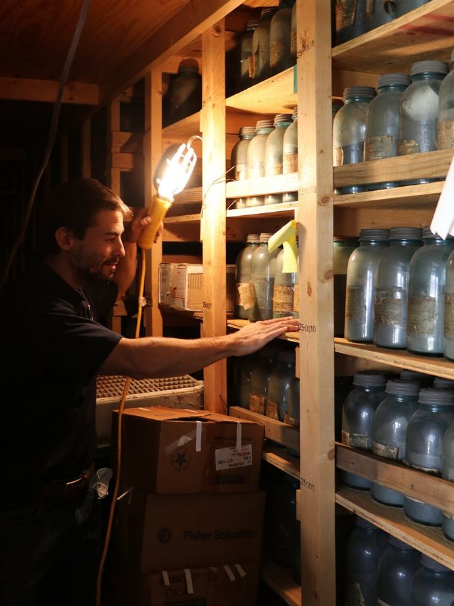How have Illinois soils changed over 120 years? U of I scientist needs your help

URBANA, Ill. – When he heard an old barn on the University of Illinois campus was scheduled for demolition, soil scientist Andrew Margenot went to investigate. Inside, on dusty shelves, he discovered a time capsule in the form of thousands of jars of soil from around the state, some dating as far back as 1862.
It was a goldmine for Margenot, an assistant professor in the Department of Crop Sciences, part of the College of Agricultural, Consumer and Environmental Sciences (ACES) at U of I. Few long-term soil archives exceed 40 years, but as far as Margenot can tell, the trove represents the oldest soil archive in the world. And, at 450 sampling locations spanning 21 million crop acres in Illinois, it’s the largest.
After curating, cleaning up, and digitizing over 8,000 samples, a three-year effort, he's ready to resample the original locations with support from the Illinois Nutrient Research and Education Council (NREC) and the Illinois Farm Bureau. That's where Illinois property owners come in.
"We want to resample the same locations to identify how soils have changed over time in Illinois. This would yield unprecedented insight into our state's soil resource base and enable improvements in soil fertility management and conservation, including much-needed updates to the Illinois Agronomy Handbook," Margenot says.
With 450 locations to sample, mostly on private land, it's a tall order for the researchers. But for landowners, it's a piece of cake. They simply need to visit the map of locations, sign up by emailing Margenot or on the Google Map link, and wait for the research team to arrive with soil probes.
The researchers will poke a 1.5-inch diameter probe in the soil to a 3-foot depth at three points across a 10- to 15-foot area. They'll share soil data with landowners before stripping identifying location data from the samples and entering them into a database for further analysis and comparison with the old soils.
"The goal in the next few years is a public-facing database for researchers, landowners, or other stakeholders to access," Margenot notes.
He expects the data will benefit farmers, engineers, and municipal planners, and may have interesting stories to tell about erosion patterns, climate change, and sustainability.
"We have a unique opportunity to understand our soils in Illinois that, frankly, no other part of the world will ever have,” he says. "But we need people's help to make this happen.”
To reach Margenot, email margenot@illinois.edu or call 217-300-7059. Sign-up links are also provided for every location on the soil map.